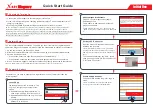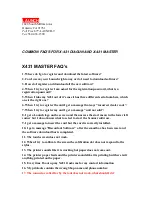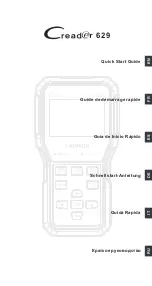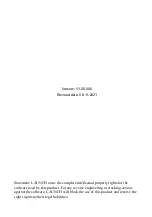
Troubleshooting
DSO8000E Series HandHeld Oscilloscope User Manual 80
Chapter 10 Troubleshooting
10.1 Problem Settlement
1. If the oscilloscope does not start up at power on, follow these steps:
1
)
Check the power cord to verify it has been connected properly;
2
)
Check the power on/off button to ensure it has been pushed;
3
)
Then restart the oscilloscope.
Contact your local distributor or directly keep touch with our Support department if the oscilloscope
still can not be turned on normally.
2. If there is no display of waveforms on the screen when the oscilloscope is turned on,
follow these steps:
1
)
Check the probe to assure its proper connection to the input BNC;
2
)
Check the channel switch (such as CH1, CH2 menu buttons) to make sure it has been turned
on;
3
)
Check the input signal to verify it has been connected to the probe correctly;
4
)
Affirm that all measured circuits have signals to output;
5
)
Turn up the magnitude for DC signals with large magnitude;
6
)
In addition, you may press the Auto Measure button to perform an automatic detection of
signals at first.
Contact our Technical Support department in time if there is still no display of waveforms.
3. If the waveform of the input signal is distorted seriously, follow these steps:
1
)
Check the probe to assure its proper connection to the channel BNC;
2
)
Check the probe to assure its good connection to the measured object;
3
)
Check the probe to verify it has been well calibrated. Otherwise, refer to the content about
calibration described in this manual.
4. If the waveform is rolling continuously on the screen but can not be triggered, follow
these steps:
1
)
Check the trigger source to make sure it consistent with the input channel;
2
)
Check the trigger level to assure its correct adjustment.
3
)
Check the trigger mode to confirm it is a right choice for the input signal. The default trigger
mode is edge trigger. However, it is not suitable for all kinds of input signals.











































